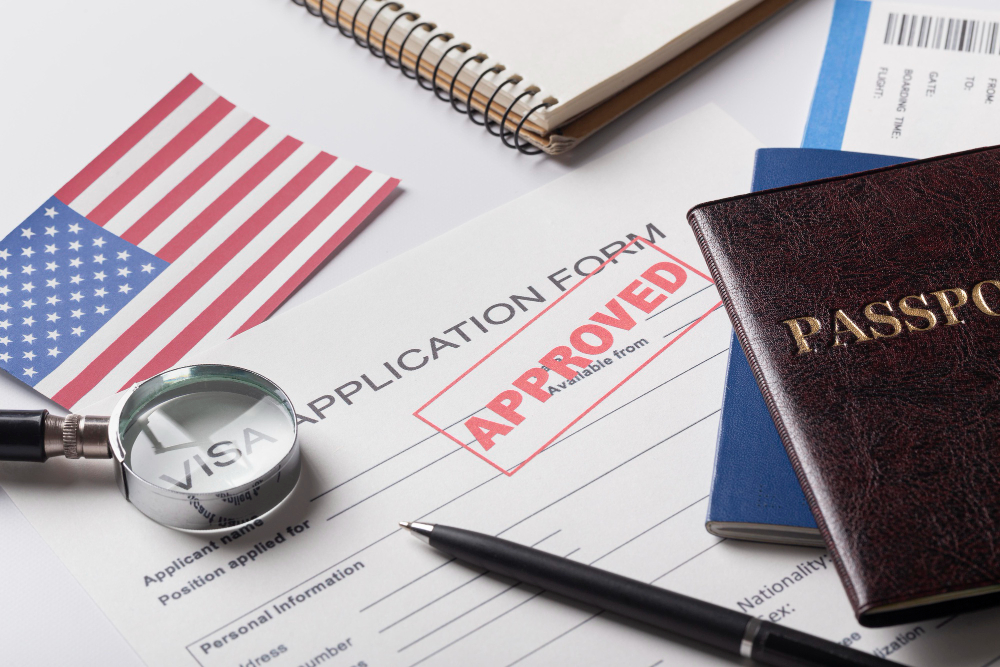Table of Contents
Introduction
Immigration reform in 2023 has long been a contentious and polarizing issue in the United States. The year 2023 brings a fresh opportunity for policymakers to address the complexities of immigration in the country. In this blog, we will delve into the evolving landscape of immigration reform, exploring the key issues, proposed changes, and the potential impact of these reforms on immigrants, society, and the nation as a whole.

Understanding the Need for Immigration Reform in 2023
The call for immigration reform in 2023 is not a new one. For decades, immigration policies in the United States have been a subject of intense debate and scrutiny. The existing system has been criticized for its inefficiency, inconsistency, and its failure to adapt to the changing needs of the nation.
There are several compelling reasons for immigration reform:
- Economic Contributions: Immigrants play a significant role in the U.S. economy. They contribute to various industries, help address labor shortages, and fuel innovation. A comprehensive immigration reform can harness the economic potential of immigrants more effectively.
- Humanitarian Concerns: The United States has traditionally been seen as a refuge for those fleeing persecution, violence, and hardship. Reforms can address issues related to asylum, refugees, and the protection of vulnerable populations.
- Family Reunification: Many immigrants seek to reunite with their family members who are already living in the U.S. A more efficient family-based immigration system can promote family unity.
- Pathways to Legal Status: Addressing the status of undocumented immigrants who are already living in the United States is a pressing concern. Reform can provide a path to legal status for these individuals.
Key Components of Immigration Reform in 2023
As immigration reform takes center stage in 2023, several key components have emerged as focal points for discussion:
- Pathway to Citizenship: One of the most critical issues is the establishment of a pathway to citizenship for undocumented immigrants. This would provide a way for those living in the shadows to gain legal status and eventually become U.S. citizens. Such a pathway would likely come with certain requirements, such as background checks, payment of back taxes, and fulfillment of other obligations.
- DACA Recipients: The Deferred Action for Childhood Arrivals (DACA) program, which provides temporary legal status to undocumented immigrants who arrived in the U.S. as children, is a prominent topic in immigration reform. Policymakers are considering measures to provide DACA recipients with a more stable and secure status.
- Family-Based Immigration: Family reunification has been a cornerstone of U.S. immigration policy. Reforms may focus on streamlining the family-based immigration process to reduce backlogs and waiting times for reunification.
- Employment-Based Immigration: Employment-based immigration is another key area of reform. Policymakers may explore ways to attract and retain skilled workers, entrepreneurs, and professionals to contribute to the American economy.
- Border Security: Enhancing border security while ensuring humane and fair treatment of asylum seekers is an ongoing concern. Immigration reform may propose measures to address both aspects of border management.
- Asylum and Refugee Policies: The U.S. has a long history of offering refuge to those fleeing violence and persecution. Immigration reform may include provisions to strengthen and streamline asylum and refugee processes.
Potential Impact of Immigration Reform in 2023
Immigration reform, if successfully implemented, could have far-reaching consequences for the United States. Here are some potential impacts to consider:
- Economic Growth: A well-designed reform could stimulate economic growth by providing pathways for immigrants to legally contribute to the workforce, invest in businesses, and innovate in various industries.
- Social Cohesion: By addressing the status of undocumented immigrants, reform may foster greater social cohesion and integration. A sense of belonging and security can lead to more harmonious communities.
- Family Unity: Immigration Reform in 2023 that prioritize family reunification can help keep families together, preventing long separations and strengthening familial and community ties.
- Humanitarian Relief: Addressing asylum and refugee policies can provide humanitarian relief to those in desperate need, upholding the nation’s tradition of offering protection to the persecuted.
- Rule of Law: Implementing immigration reform can bring millions of undocumented immigrants out of the shadows and into the legal system, promoting the rule of law and accountability.
- National Security: Effective border security measures can help safeguard the nation against criminal activities while ensuring the fair treatment of asylum seekers.
Challenges and Controversies
Immigration reform in 2023 is not without its challenges and controversies, and any effort to overhaul the system is likely to face opposition and scrutiny:
- Partisan Divide: Immigration Reform in 2023 has historically been a highly partisan issue. Bridging the gap between the parties to find common ground can be challenging.
- Public Opinion: Public opinion on immigration varies widely. Reform proposals must navigate the diverse views of the American population.
- Economic Concerns: Some worry that Immigration Reform in 2023 may have negative economic impacts, such as increased competition for jobs or strains on public resources.
- Legal Backlogs: Reform may lead to increased demand for legal services, potentially exacerbating existing immigration court backlogs and processing delays.
Conclusion
The question of Immigration Reform in 2023 is a complex, multifaceted issue with significant economic, social, and humanitarian implications. In 2023, the nation stands at a crossroads, with an opportunity to address the shortcomings of the existing immigration system.
While Immigration Reform in 2023 discussions are fraught with challenges, they also offer a chance to reaffirm the values of the United States as a nation that welcomes and integrates those who seek a better life. The choices made in the realm of immigration reform will shape the future of the nation, its economy, and its society. It is a crucial conversation that will define the path forward for the United States in the 21st century.
FAQ: Immigration Reform in 2023
Q1: What is immigration reform, and why is it necessary in 2023?
A1: Immigration Reform in 2023 refers to the process of modifying existing immigration laws and policies to address the changing needs and challenges of the nation. It is necessary in 2023 because the United States continues to grapple with an outdated immigration system that needs modernization to promote economic growth, address humanitarian concerns, and provide a clear path for those living in the country without legal status.
Q2: What is the pathway to citizenship, and how does it fit into immigration reform?
A2: The pathway to citizenship is a central component of Immigration Reform in 2023. It involves creating a legal process for undocumented immigrants to earn legal status and eventually become U.S. citizens. The specifics of this pathway, such as eligibility criteria and requirements, will be defined as part of reform proposals.
Q3: What is DACA, and how is it being addressed in 2023’s immigration reform discussions?
A3: DACA, or Deferred Action for Childhood Arrivals, is a program that provides temporary legal status to undocumented immigrants who arrived in the U.S. as children. In 2023, policymakers are considering measures to provide DACA recipients with more secure and stable legal status to protect them from potential deportation.
Q4: How will family-based immigration be impacted by reform, and what are the goals in this area?
A4: Immigration Reform in 2023 aims to streamline the family-based immigration process, reducing backlogs and waiting times for family reunification. The goal is to keep families together and strengthen familial and community ties.
Q5: What is employment-based immigration, and how might it be reformed in 2023?
A5: Employment-based immigration is a system that attracts and retains skilled workers, entrepreneurs, and professionals to contribute to the U.S. economy. In 2023, reform may propose changes to make it more efficient and responsive to the needs of the job market.
Q6: What role does border security play in immigration reform, and how is it balanced with humanitarian concerns?
A6: Immigration reform typically addresses both border security and humanitarian concerns. The challenge is to enhance border security while ensuring humane and fair treatment of asylum seekers. Balancing these interests is essential to comprehensive reform.
Q7: How can immigration reform impact the U.S. economy and job market?
A7: Immigration reform can stimulate economic growth by providing pathways for immigrants to legally contribute to the workforce, invest in businesses, and innovate in various industries. However, concerns about competition for jobs are also considered and debated in the reform process.
Q8: What is the current public opinion on immigration reform, and how does it influence the political landscape?
A8: Public opinion on immigration reform varies widely, with differing views on issues such as pathways to citizenship, border security, and humanitarian relief. Public opinion can influence the political landscape, making it challenging for policymakers to find common ground.
Q9: What are the potential consequences of not implementing immigration reform in 2023?
A9: Failing to implement immigration reform could perpetuate the challenges of the existing system, including undocumented immigration, legal backlogs, and a lack of legal pathways for immigrants. It may also prevent the U.S. from fully harnessing the economic and social contributions of immigrants.
Q10: What can individuals do to stay informed and engage with the immigration reform process in 2023?
A10: To stay informed and engage with the immigration reform process, individuals can follow news updates, reach out to their elected representatives, and participate in community discussions and advocacy groups that focus on immigration issues. Staying informed and voicing concerns are essential steps in shaping the future of immigration reform.











